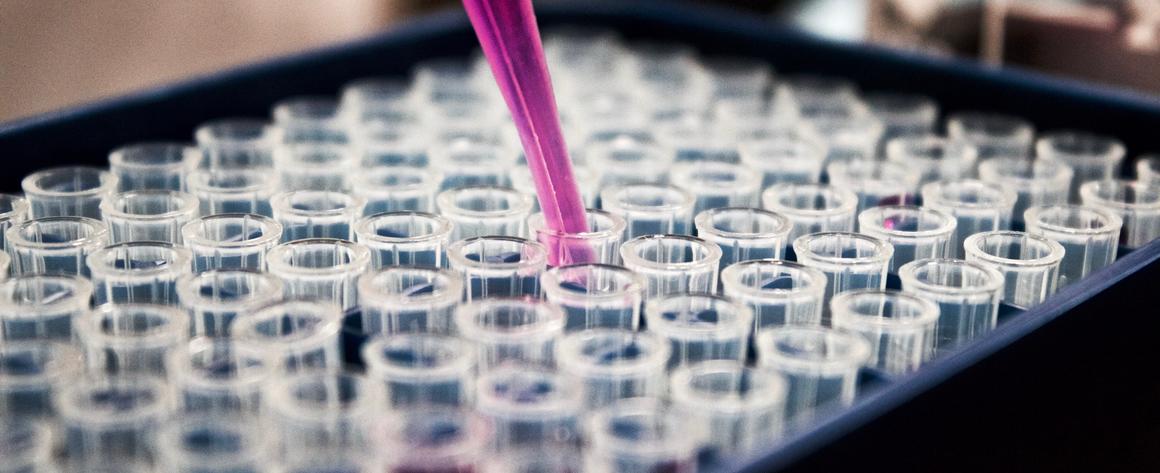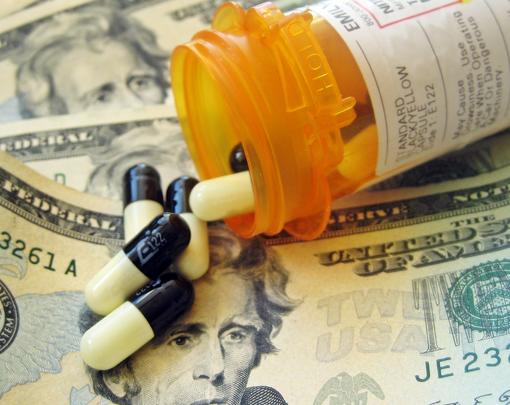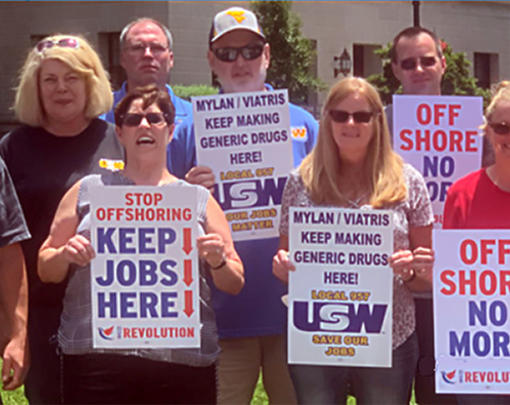To promote the execution of pharmaceutical R&D in the public interest, the US should establish a national pharmaceutical R&D institute for full-cycle drug development, which will help promote long-term access to medicines, reignite innovation, and ensure prioritization of public health needs. A national pharmaceutical R&D institute could address many current deficiencies in the pharmaceutical market, re-centering public health needs, returning revenues to public balance sheets, reducing inefficiencies, and ensuring broad access to the new drugs developed. This institute would have a mandate to engage in full-cycle pharmaceutical R&D and could be established at the National Institutes of Health (NIH), benefitting from close collaboration with existing institutes and their increasing involvement in early-phase clinical trials.
The US public sector has a long tradition of path-breaking innovation. The Defense Advanced Research Projects Agency (DARPA) within the Department of Defense, for example, was instrumental in overseeing R&D that resulted in technological breakthroughs such as the Internet, Global Positioning System (GPS), and microchips.1 Close collaboration and joint funding from the Central Intelligence Agency, the Department of Energy, and the National Science Foundation spurred advances like lithium-ion batteries, while NASA put men on the moon and helped build the International Space Station. This track record of public sector scientific achievement hints at what might be possible were we to redirect public funds in pharmaceutical R&D to a publicly-owned and controlled national institute with a clear mission to deliver high-quality medications that improve or extend lives of patients across disease groups.
To ensure this institute delivers on this promise and most effectively deploys public dollars towards this aim, the institute’s founding statutes should include the:
- Goal to contribute to the development of a safe, adequate, and accessible supply of essential medicines to the US (and beyond);
- Commitment to transparency measures that accelerate of medical progress by reducing duplication and waste, such as those recommended in the WHO Best Practices on clinical trial transparency;2
- Ownership and management of results in the public interest.
Through these principles, the institute would focus on developing drugs most needed by our society, both those that fill current unmet needs and those that deliver clear advances in therapeutic value across disease groups. A national public R&D institute would also substantially advance open and collaborative science by ensuring greater access to the data associated with the intellectual property on its inventions as well as the clinical trials undertaken. That is, the institute could be chartered in such a way to mandate that its inventions are patented—to protect against private companies that might patent public inventions and raise prices—but maintained in a patent pool subject to a copyleft-type license.3 An open approach to intellectual property like this would build upon the NIH’s existing Public Access Policy for research papers, and allow for greater learning from the failures or unexpected outcomes that inevitably occur as part of the R&D process.
Critically, the creation of a federal pharmaceutical R&D institute would allow the public to retain the patent rights on the medications it develops. Whether the institute contracted with a public or private manufacturer to produce medications, the intellectual property would remain with the institute, meaning that the medicines could be distributed at generic prices. Any revenues generated by the institute in licensing its intellectual property could be reinvested into R&D.4
Comparison with Traditional Pharmaceutical Innovation Model
Traditionally, prescription drug innovation starts with publicly-funded basic or translational science and then often involves substantial late-stage contributions from the pharmaceutical industry. However, the role of for-profit manufacturers in this process means that profitable innovation is favored over innovation that would maximally benefit the public interest and that the innovation that emerges is subject to high prices that can limit access. As a result, some have claimed that Americans are “paying twice”5 for R&D and again through high out-of-pocket prescription costs and insurance premiums. In comparing a national pharmaceutical R&D institute with the traditional model, it is important to keep 3 issues in mind:
The public sector already plays a pivotal in pharmaceutical R&D: The NIH alone accounts for more than half of the R&D spend by major pharmaceutical companies each year.6 This funding was linked at some level the development of all 210 new drugs approved between 2010 and 2016.7 Other public entities, including the Department of Defense and the Texas Cancer Initiative, also offer important support. Such support classically covers basic and translational science, but a quarter of small-molecule drugs approved over the past decade were based in part on key late-stage contributions from such publicly-supported research institutions.8 Thus, a national pharmaceutical R&D institute would be based on an already functioning scaffolding of publicly-supported innovation.
Pharmaceutical industry investment in R&D can be inefficient: Major pharmaceutical companies spend less than a fifth of their revenue on R&D,9 about half of what they do on marketing.10 Additionally, today many large drug companies “routinely distribute more than 100 percent of profits to shareholders, generating the extra cash by reducing reserves, selling off assets, taking debt, or laying off employees.”11 A national pharmaceutical R&D institute may not have any more success in innovation investment than the private industry, but it would be able to invest a larger fraction of its funding in critical R&D needs.
Patient health needs remain unmet: The industry has downsized its physical assets and human resources in recent years related to fundamental scientific investigation that can uncover important new treatments for urgent patient and public health needs. A national pharmaceutical R&D institute can be designed to prioritize medications for public health priorities like antibiotic-resistant infections,12 central nervous system conditions,13 and tropical diseases.14
- 1Mariana Mazzucato, The entrepreneurial state: debunking public vs. private sector myths, Public Affairs: 2015.
- 2Joint statement on public disclosure of results from clinical trials, International Clinical Trials Registry Platform (ICTRP), World Health Organization, May 2017, https://www.who.int/ictrp/results/jointstatement/en/.
- 3Patent pools are an agreement between two or more patent owners to license one or more of their patents to one another or to third parties, reducing transaction costs and accelerating scientific innovation.
- 4Dean Baker, “The Future of the Pharmaceutical Industry: Beyond Government-Granted Monopolies,” CEPR, March 2019, http://cepr.net/images//stories/reports/pharma-industry-2019-03.pdf.
- 5Robert Pear, “‘Paying twice’: a push for affordable prices for taxpayer-funded drugs,” New York Times, May 28, 2018.
- 6“Aggregate pharmaceutical company drug sales, R&D outlays, and selected government R&D outlays,” Drug Databases, Knowledge Ecology International, http://drugdatabase.info/databases/.
- 7Galkina Cleary E, Beierlein JM, Khanuja NS, McNamee LM, Ledley FD. Contribution of NIH funding to new drug approvals 2010-2016. Proc Natl Acad Sci. 2018;115(10):2329-34.
- 8Nayak R, Avorn J, Kesselheim AS. Public sector financial support for late stage discovery of new drugs in the United States: cohort study. BMJ. 2019;367:l5766.
- 9Kesslheim AS, Avorn J, Sarpatwari A. The high cost of prescription drugs in the United States: origins and prospects for reform. JAMA. 2016;316(8):858-71.
- 10Ana Swanson, “Big pharmaceutical companies are spending far more on marketing than research,” Washington Post, February 11, 2015, https://www.washingtonpost.com/news/wonk/wp/2015/02/11/big-pharmaceutical-companies-are-spending-far-more-on-marketing-than-research.
- 11William Lazonick, Matt Hopkins, Ken Jacobson, Mustafa Erdem Sakinç and Öner Tulum, “US Pharma’s Financialized Business Model,” Working Paper No. 60, Institute for New Economic Thinking, July 13, 2017, https://www.ineteconomics.org/uploads/papers/Final-WP_60-Lazonick-et-al.-US-Pharma-Business-Model-sept-8.pdf.
- 12Progress in the fight against multidrug-resistant bacteria? A review of U.S. Food and Drug Administration-approved antibiotics, 2010-2015. Ann Intern Med. 2017;166(1):79.
- 13Choi DW, Armitage R, Brady LS, Coetzee T, Fisher W, Hyman S, et al. Medicines for the mind: policy-based “pull” incentives for creating breakthrough CNS drugs. Neuron. 2014;84(3):554-63.
- 14Kesselheim AS, Maggs LR, Sarpatwari A. Experience with the priority review voucher program for drug development. JAMA. 2015;2015:314(16):1687-8.





